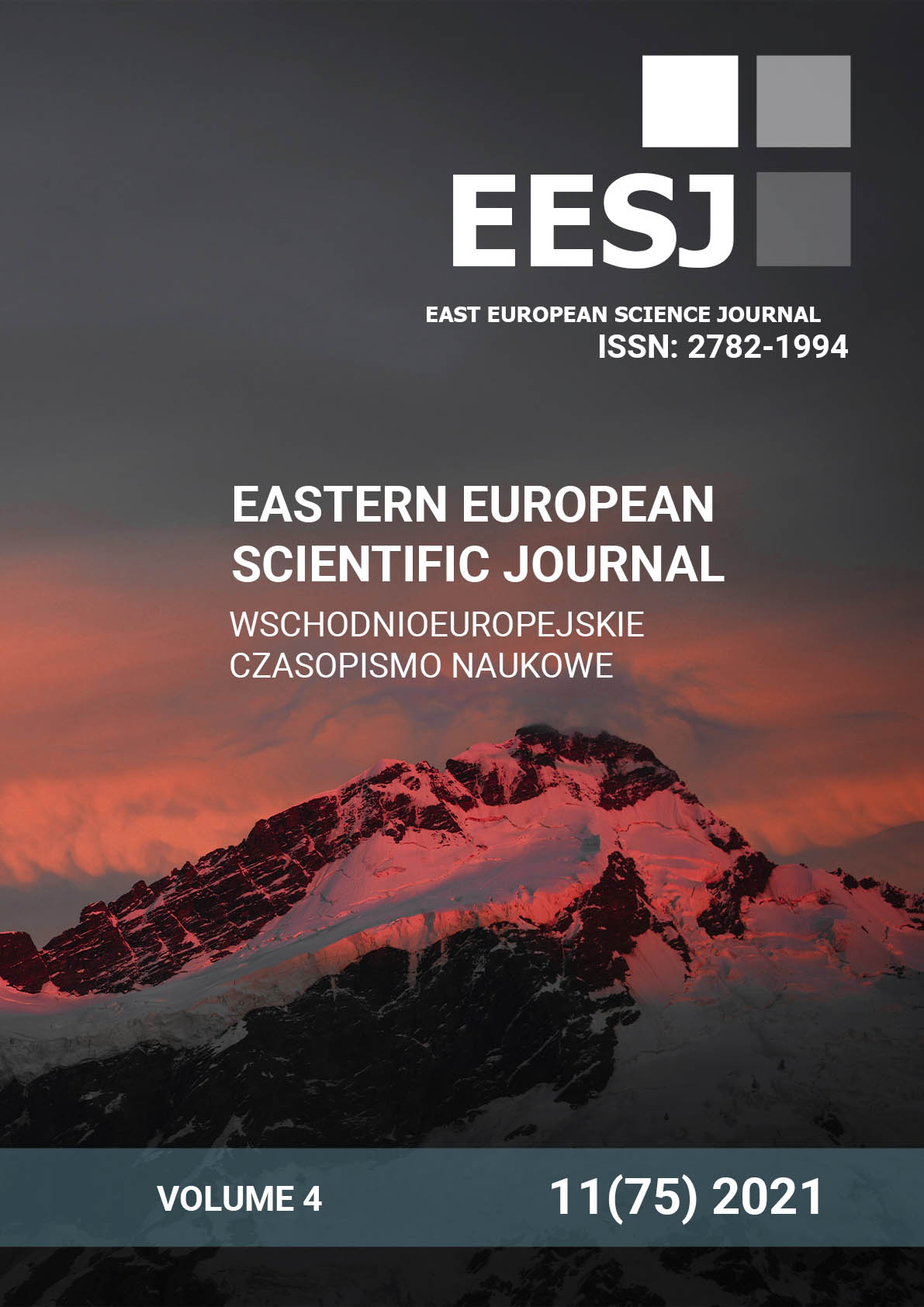HIGH-TEMPERATURE CONSOLIDATION AS A STRUCTURE CONTROL METHOD OF THE NANOPOROUS GLASSES
DOI:
https://doi.org/10.31618/ESSA.2782-1994.2021.4.75.178Keywords:
porous glass, nanoporous glass, structure, consolidation, electron microscopyAbstract
Nanoporous glass is a matrix for composite optical materials, in which, by impregnating various activators, it is possible to initiate the appearance of properties that are uncharacteristic for the composite materials. In this case, the main parameter of the structure of nanoporous glass is porosity, which can be controlled by the method of high-temperature consolidation. In this work, we have studied the effect of temperature consolidation on the structure of porous glass.
References
Levitz P. et al. Porous Vycor glass: The microstructure as probed by electron microscopy, direct energy transfer, small‐angle scattering, and molecular adsorption //The Journal of chemical physics. – 1991. – Т. 95. – №. 8. – С. 6151-6161.
Komandin G. A. et al. Effect of moisture adsorption on the broadband dielectric response of SiO2-based nanoporous glass //Journal of Applied Physics. – 2019. – Т. 126. – №. 22. – С. 224303.
Mazilu C. et al. Nanoporous glass in Na2OB2O3-SiO2 oxidic system, for potential biomedical applications //Journal of optoelectronics and advanced materials. – 2007. – Т. 9. – №. 7. – С. 2036-2040.
Shakhgil’dyan G. Y. et al. Nanoporous glass with controlled pore size for high-efficiency synthesis of oligonucleotides //Glass and Ceramics. – 2019. – Т. 75. – №. 9-10. – С. 377-382.
Xia J. et al. Rare-earth doped silica microchip laser fabricated by sintering nanoporous glass //Optics letters. – 2005. – Т. 30. – №. 1. – С. 47-49.
Fedotov S. S. et al. 3-bit writing of information in nanoporous glass by a single sub-micro second burst of femtosecond pulses //Optics letters. – 2018. – Т. 43. – №. 4. – С. 851-854.
Lipatiev A. S. et al. Multilevel data writing in nanoporous glass by a few femtosecond laser pulses //Applied Optics. – 2018. – Т. 57. – №. 4. – С. 978-982.
Fedotov S. S. et al. Laser-induced cavities with a controllable shape in nanoporous glass //Optics Letters. – 2020. – Т. 45. – №. 19. – С. 5424-5427.
Barbillon G. Latest Novelties on Plasmonic and Non-Plasmonic Nanomaterials for SERS Sensing //Nanomaterials. – 2020. – Т. 10. – №. 6. – С. 1200.
Sharma B. et al. SERS: Materials, applications, and the future //Materials today. – 2012. – Т. 15. – №. 1-2. – С. 16-25.
Pan Z. et al. Surface‐enhanced Raman probing of biomolecules using Ag‐coated porous glass‐ceramic substrates //Journal of Raman Spectroscopy – 2005. – Т. 36. – №. 11. – С. 1082-1087.
de Barros Santos E., Sigoli F. A., Mazali I. O. Metallic Cu nanoparticles dispersed into porous glass: A simple green chemistry approach to prepare SERS substrates //Materials Letters. – 2013. – Т. 108. – С. 172-175.
Zou W. et al. Porous alumina aerogel with tunable pore structure for facile, ultrasensitive, and reproducible SERS platform //Journal of Raman Spectroscopy. – 2019. – Т. 50. – №. 10. – С. 1429-1437.
Downloads
Published
Issue
Section
License

This work is licensed under a Creative Commons Attribution-NoDerivatives 4.0 International License.
CC BY-ND
A work licensed in this way allows the following:
1. The freedom to use and perform the work: The licensee must be allowed to make any use, private or public, of the work.
2. The freedom to study the work and apply the information: The licensee must be allowed to examine the work and to use the knowledge gained from the work in any way. The license may not, for example, restrict "reverse engineering."
2. The freedom to redistribute copies: Copies may be sold, swapped or given away for free, in the same form as the original.




